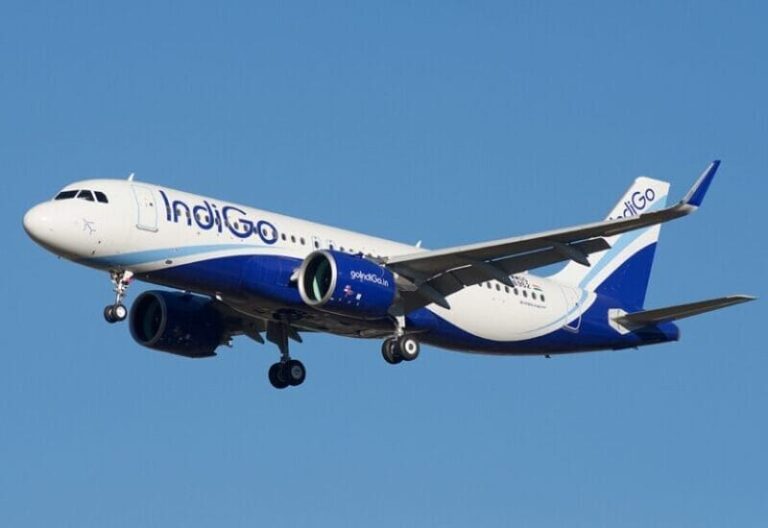
India beleaguered aviation industry is in the spotlight again after the Directorate General of Civil Aviation (DGCA) audit found serious safety and operational lapses at several large Indian carriers. The audit, part of the DGCA’s annual surveillance plan, revealed material flamworthy compliance and operational deficiencies that would require appropriate corrective action. These are the challenges that are increasingly faced in aviation, and it is very important that we have a strong regulator that ensures we have high standards of safety, and that airlines comply with both national and international safety regulations. The industry has ballooned, prompting an urgent need for swift changes to protect public safety and root out corruption in the sector.
The Directorate General of Civil Aviation (DGCA) on Thursday presented the fresh data, as part of the Annual Surveillance Plan (ASP) under the Safety Oversight Programme, on an audit carried out on scheduled airlines of the country operating in India. That’s a long, hard look airlines across the country, as they try to “achieve and maintain the highest degree of regulatory compliance.” These audits are critical to the aviation industry because they ensure airlines maintain high safety and operations standards in order to facilitate safe and efficient air travel.
Key Findings on Airline Compliance
One of the airlines under significant scrutiny following the release of the audit results is the nation’s flag carrier, which recorded 51 audit findings, ranking it second-highest among all the airlines reviewed. The audit also highlighted a regional carrier, which had the most significant number of findings at 57. The DGCA categorizes its findings into two levels: Level 1 and Level 2. Level 1 findings are considered more critical and require immediate attention, usually giving the airline a week to submit a corrective action report. Level 2 findings are of medium priority, providing the airline with up to a month to resolve the identified issues.
The audit found that the national carrier had seven Level 1 findings, focusing on areas of greater concern such as operational procedures and safety compliance. Additionally, the airline had 44 Level 2 findings, pointing to less urgent, but still significant, areas requiring improvements. This audit result puts a spotlight on the airline’s operational safety practices, raising expectations for corrective actions to be swiftly implemented.
Other Airlines Under Review
The audit also assessed several other prominent carriers in India, highlighting varying levels of compliance and operational challenges. The regional carrier with the highest number of findings recorded 57, a mixture of both Level 1 and Level 2 issues. This suggests that while the airline’s overall safety standards are adequate, there are still several operational aspects that need attention. Other airlines with notable findings include a budget airline with 41 findings and another regional carrier with 35. These carriers’ audits indicate a mix of procedural lapses and operational inefficiencies, with findings spread across both levels of severity.
Other airlines, such as a low-cost carrier and another regional airline, had significantly fewer audit findings, with 17 and 14 findings, respectively. However, these airlines still face concerns that need to be addressed to ensure regulatory compliance. One of these carriers had the highest number of Level 1 findings (10), highlighting critical issues such as documentation and procedural inefficiencies that require immediate corrective measures.
Detailed Breakdown of Audit Findings
The audit categorized the findings into two levels to better reflect the seriousness of the issues identified. Level 1 findings, regarded as more urgent, typically involve problems related to safety protocols, the maintenance of equipment, and adherence to operational procedures. Airlines are required to take swift corrective action within a week of receiving these findings. On the other hand, Level 2 findings involve operational or procedural issues that do not pose an immediate risk but still need to be resolved within a month.
In the case of some airlines, a large number of findings were categorized under Level 2, indicating that while the issues identified were not immediately threatening to safety, they still point to areas where airlines need to streamline operations. For example, the regional carrier with the highest number of findings had most of its issues classified as Level 2, signaling the need for significant attention to operational efficiencies. The national carrier’s audit, with 44 Level 2 findings, similarly highlights operational inefficiencies that can be corrected over time, though they still require urgent attention.
Understanding the Impact of DGCA Audits
The DGCA has made it clear that the audit findings do not suggest that the airlines are unsafe or operating in a way that puts passengers at risk. The audits are designed to assess the breadth and complexity of airline operations, offering valuable insights into areas that can be improved to ensure optimal safety and efficiency. The airline industry is constantly evolving, and these audits are a tool used by the DGCA to ensure that airlines comply with national and international regulations.
The regulator explained that each airline is formally notified of the audit findings and is required to submit a detailed action plan to correct the identified issues. The DGCA closely monitors these corrective actions, ensuring that airlines meet all necessary standards and comply with the required safety measures. The regulator’s ongoing oversight is crucial to maintaining the integrity of India’s aviation industry and ensuring that safety protocols are never compromised.
India’s aviation sector is under intense scrutiny as the DGCA audit reveals critical safety and operational gaps across airlines, highlighting the urgent need for corrective action to maintain high safety standards.
Commitment to Safety and Compliance
The DGCA’s screening of Indian airlines is part of its larger mandate to ensure their compliance with international aviation safety standards. Regulator Reassures Despite the audit results, the regulator has reassured people that the country’s aviation safety system remains strong and mirrors ICAO best practices. The DGCA has noted that finding indicate active surveillance of carriers, and highlights the complexities of airline operations in India. As the air-travel business has boomed, the task of keeping airlines safe and secure has taken on a new urgency.
Overall, DGCA’s audits are an important way that airlines in India are kept up to the highest safety levels. Although the conclusions reveal opportunities for improvement, they also demonstrate the capability of the regulatory framework to capture and address matters that may affect operational safety. So long as the intense supervision and corrective action practices are in force, India’s aviation sector is among the most regulated and safety-conscious of its kind in the world.
The post India Aviation Sector Faces Intense Scrutiny as DGCA Audit Unveils Critical Safety and Operational Gaps Across Airlines, Demanding Urgent Reform: New Update You Need to Know appeared first on Travel And Tour World.from Travel And Tour World https://ift.tt/LjsOuZT
via >EPR


